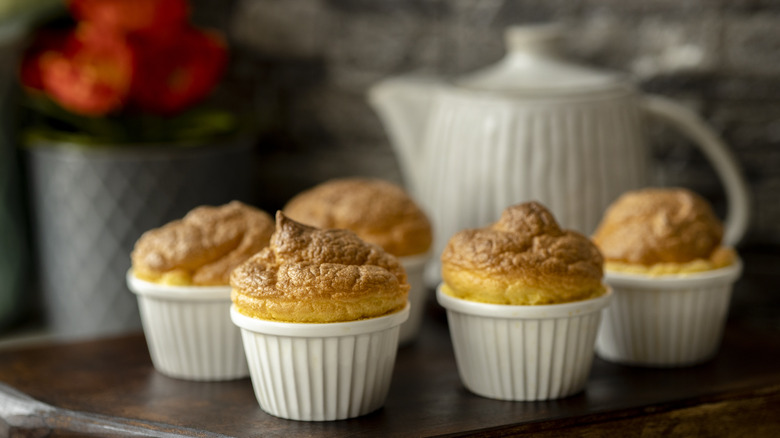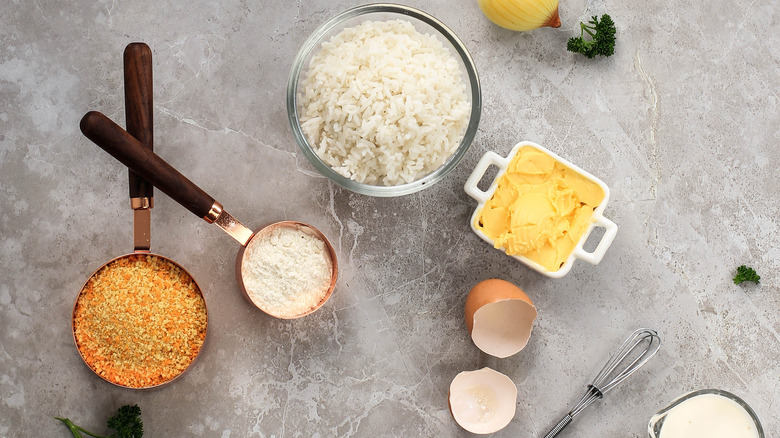The Tasty Way To Prevent Your Soufflé From Sticking To The Dish
Of all the ways you can enjoy eggs, soufflés are some of the lightest, most delicate displays of their versatility. Soufflés are a French culinary tradition characterized by adding yolks and whipped whites separately to a simple batter, which accounts for an airy texture and elegantly puffy presentation.
While soufflés are perfectly simple, using a few household staples, successful execution requires finesse. Because they're a binding agent, eggs have a frustrating tendency to stick to pans or baking dishes, especially if you're not constantly stirring them or using non-stick cookware. Considering soufflés tend to call for ceramic baking dishes, batter sticking to the bottom and sides of your baking dish is a common issue. Luckily, there's an easy and tasty preventative measure that utilizes the same ingredients in your souffle: butter and cheese.
Just as you oil or butter a baking pan before pouring cake batter in, you'll use butter to create a lubricating buffer that'll prevent the eggs from sticking while they bake. That said, soufflés still need the walls of their making dish to guide them while they rise in the oven. Consequently, a thorough dusting of cheese gives eggs a textured surface to cling to so that they can still rely on the baking dish's walls to guide them upwards.
Creating a tasty buffer
Butter is the optimal fat buffer because it's also an ingredient in egg soufflés, so you won't have to buy a separate ingredient. However, oil or cooking spray would also work. Most savory egg souffles also contain a light sprinkling of cheese. Parmesan or another drier cheese will make the best-textured surface for the egg batter, but breadcrumbs or even smashed crackers are equally effective. If you're making a sweet egg souffle, you can also use granulated sugar or crushed graham crackers to dust the surface of the dish.
You can butter and coat your baking dish before you begin making your bechamel and separating your eggs. A firmer stick of butter is easier to handle and will leave a more perceptible coating so you'll see if you've missed a spot.
When you place the souffle in the oven, temperature is another important factor that can affect sticking and rising. You should pop the souffle into the oven at 400 degrees Fahrenheit, but you'll lower the temperature immediately to 375 degrees Fahrenheit. While you need the initial high temperature to coax the eggs to rise, they'll dry out and stick to your dish if you bake them at that temperature all the way through. Another tip is to put the baking dish on a baking sheet to shield the bottom of the baking dish from direct exposure to the heat source.

